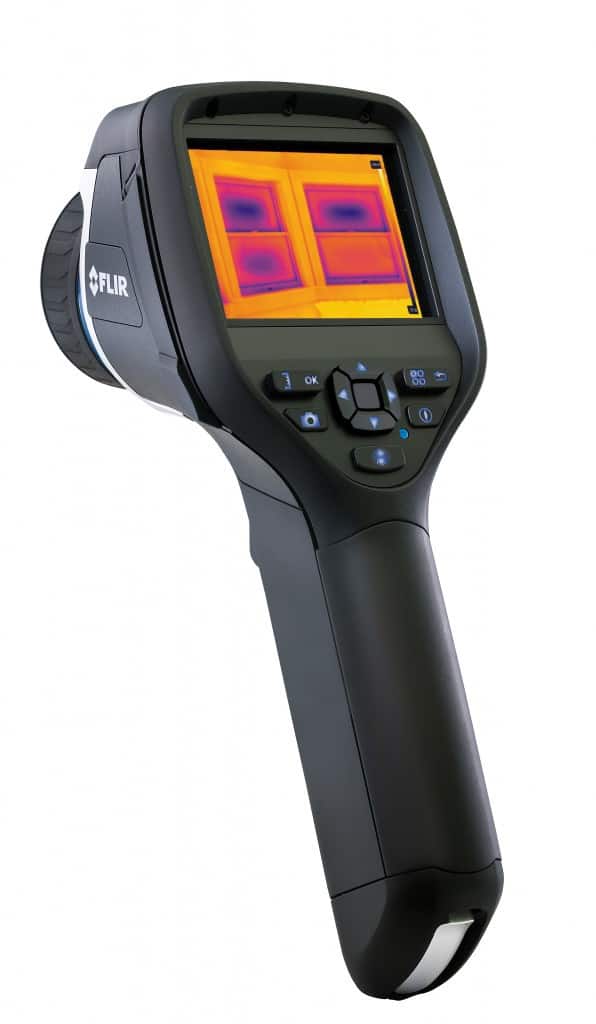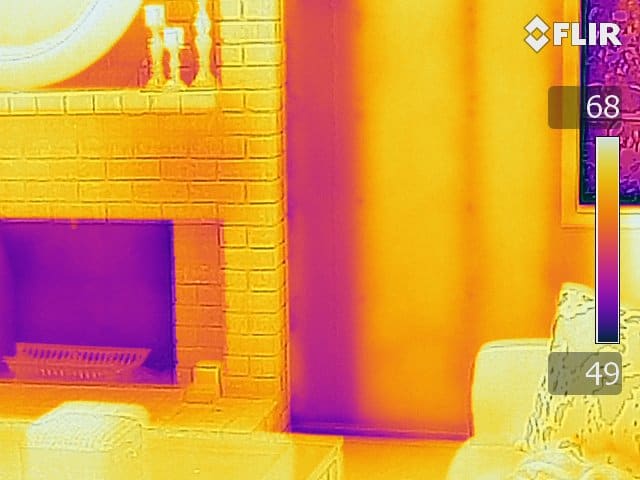Make the invisible visible
Global interest for thermal imaging has grown considerably over the years and it is already well-established in the Australian electrical and pest industries. The technology is also starting to pick up pace in the wider building market, but there are still some challenges ahead. Dimi Kyriakou explains.
Thermal imaging technology has come a long way since it was first introduced in the 1960s. These days the feature-packed cameras on the market are lighter, more compact and generate crisp images for analysis.
For those of you who are a little lost as to what the technology is all about, thermal imaging is a non-invasive approach for monitoring and diagnosing the condition of buildings. A thermal imaging camera can identify problems at an early stage so they can be documented and corrected before they become too serious and costly to repair.
Flir Systems Australia is just one of the many manufacturers that offer a wide range of thermal imaging cameras for different applications and is a corporate member of the Australian Professional Thermographers Association. As country manager Roger Christiansz explains, the technology works by converting the infrared energies in the field of view into a thermal image or temperature picture.
“The theory is that everything above absolute zero kelvin emits infrared energy. Even a block of ice emits infrared energy,” Roger says.
“A thermal imaging camera is in effect what we call a radiometer. When the cameras receive infrared energy from an object, they convert the radiation to a temperature using an equation. It effectively produces a thermogram or thermal temperature picture in real time.”
The technology is already well established in both the Australian electrical industry (finding faults in supply lines and switchboards) as well as the pest industry (termite detection), however thermal imaging undoubtedly has great potential for use in the wider building industry – be it a renovation or new build in the pre/post construction stage.
“Thermal imaging cameras are the perfect tool for locating and identifying building failures because they make the invisible visible. But for this to take place, there has to be some heat transfer between the inside of the building and the outside,” Roger says.

“A building diagnostics inspection with a thermal imaging camera can help to visualise energy leaks, particularly around door frames and window sills. It can detect missing or defective insulation as well as badly insulated areas and you can look at noggins and studs to see if they are installed according to the building regulations.”
The biggest application for thermal imaging is moisture and damp protection, whether it’s in the roof and wall, and it can locate water infiltration in flat roofs and detect leaking water pipes close to the surface of the plasterboards or floors and roofs. The power of thermal imaging technology can also detect mould before it starts to form – for instance, if there is moisture in carpet underlay – or detect a break in the circuit of a floor heating system.
Although thermal imaging technology has come a long way, Roger admits that there is still room for improvement.
“The market in Australia is still very small compared to Europe, although the energy audit sector is starting to pick up the technology as it can pinpoint the heat loss or heat gain very easily in a building. Once energy prices start going through the roof, people will be careful in making sure their homes are energy efficient,” he says.
“For builders, using this technology will give them an advantage in their business. If they’re called in to detect any faults in a building or do a pre-purchase inspection, it is very easy and quick to do with thermal imaging. That’s the beauty of the technology.
“Hopefully one day there will be legislation to say that a thermal imaging inspection must be done in a building so there are no heat losses or heat gains. It’s also very important to get training – while the camera itself is simple to use, understanding and interpreting the thermal image requires some training.”
As with any budding technology, there are still some hurdles that must be overcome before thermal imaging technology is readily adopted in the local building industry.
The challenges ahead
While manufacturers do provide training on the operation of their thermal imaging cameras as well as the additional software, there are wider issues that revolve around the availability of thermal imaging training courses that refer to Australian rather than international standards and are preferably trade-specific, so operators can choose a camera that is fit for purpose.
The Australasian Thermographers Association (ATA) secretary Martin White is currently working hard to lobby regulators to address these issues. The ATA was formed in 2010 with the aim to introduce standards that are specific to Australian industry as well as the individual trades that use thermal imaging technology in their line of work – be it electrical, pest or building workers.
“The issue with thermal imaging in Australia at the present time is that there are no procedural thermal imaging standards. The problem is that some overseas companies are coming into Australia and teaching international standards, which are not entirely relevant,” Martin says.
At the moment, AS 3998-2006 Non-destructive testing relates to the qualification and certification of personnel that are conducting non-destructive testing; this standard is a direct text adoption of the international standard ISO 9712:2005.
However, as Martin explains, this is only a training standard that refers to one type of thermal imaging – that is, non-destructive testing rather than condition monitoring – and does not cover any procedural standards except for the electrical industry, which are addressed in AS/NZS 3000:2007 Electrical Installations (better known as the Wiring Rules).

“Our association has put in an application to Standards Australia to generate new standards for every industry that uses thermal imaging in Australia. For the building industry, we’re looking to adopt ISO 6781 Thermal insulation – Qualitative detection of thermal irregularities in building envelopes – Infrared method,” he says.
Martin, who is on the Australian Standards committee for the condition monitoring thermal imaging standard and a Level 2 Thermographer (Electrical), currently offers training courses for the electrical and pest industries through the ATA in Australia, New Zealand and Asia. They provide training courses to AS 3998 that are trade-specific, so the instructors are qualified in the trade they are teaching.
“The first thing you should ask before undertaking a thermal imaging training course is the instructor’s qualification – are they teaching to Australian Standards and do they have trade knowledge or experience?” he says.
“Thermal imaging is not a recognised training syllabus in Australia under the standard Registered Training Organisations (RTOs). It hasn’t gotten that far yet and the push is to get it there. We eventually want apprentices to learn the technology as they’re going through their studies – it makes more sense.”
Martin goes on to explain that there are three training levels in thermography: a Level 1 thermographer has the ability to operate a thermal camera onsite and take a good quality picture, gather the data and download it to a computer. This is where a Level 2 thermographer steps in and dissects the images, produces a report and sends it to the client. It takes a certain amount of industry experience before you reach the highest Level 3 qualification.
“An issue that we’re facing at the moment is that it only takes six months to become a Level 2. There are so many variables on a building site and even in 10 years you won’t learn everything because every job is different. This is because Level 2 has to have a really good understanding of a material’s thermal properties and how different materials and circumstances influence the temperature readings,” he says.
“Also, thermal images and reports are legal documents. Once you take it, download it to a computer and analyse it, you can’t change the picture. So builders always need to be aware of their duty of care and professional indemnity.”
While Level 1 training provides you with enough knowledge to choose the best thermal imaging camera for your line of work, Martin stresses that it is imperative to choose carefully and ensure the camera is fit for purpose.
“The art of the thermal imaging camera is to find the smallest thermal anomaly from the energy within the wall.
“Every camera works, provided that it’s fit for purpose. Some tradies don’t know what they’re buying, they can’t work it onsite and they give up on it when in actual fact it’s the wrong type of camera for what they want to do. It’s a shame because it’s a very useful technology.”
Despite the challenges, Martin is certain that thermal imaging cameras have a place in a builder’s toolbox.
“Given the technology’s widespread adoption across Europe, we think it does have a place for builders. It’s a long-term investment that will take you through for many years and help detect problems in many building applications.”
